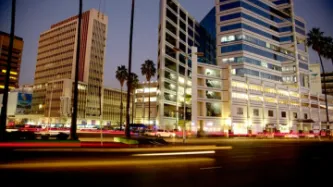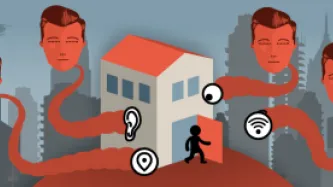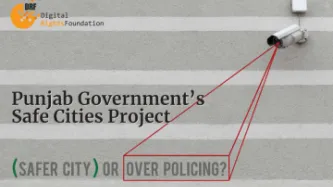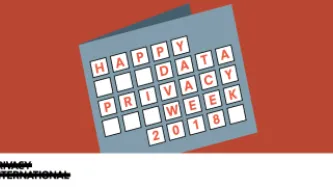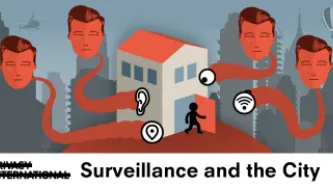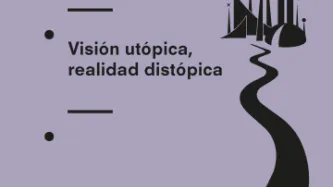Search
Content type: Long Read
Zimbabwe has a history of state led surveillance that is carried out more for political gain than for the investigation of legitimate criminal activities. During former President Mugabe’s 37 year rule the government used laws and state security structures to carry out targeted surveillance of persons of political interest and more generalised mass surveillance of the population.
Specific laws such as the Interception of Communications Act as well as mandatory SIM-card registration regulations…
Content type: Examples
In 2019, interviews with Hong Kong protesters destroying smart lampposts revealed that many distrusted the government's claim that they would only take air quality measurements and help with traffic control, largely because of the comprehensive surveillance net the Chinese government was using to control and oppress the minority Uighur population in the Xinjiang region. As part of their response to this threat, the protesters wore masks, carried umbrellas, and travelled on foot, using online…
Content type: Examples
In 2019 Hong Kong protesters cut down 20 of the city's smart lampposts, which are streetlights equipped with sensors and cameras, in order to counter the threat that they were vectors for surveillance technologies such as facial and licence plate recognition. TickTack Technology, which provided the lampposts, terminated its contract with the Hong Kong government because of the property damage and threats to its employees. Protesters uploaded pictures of the lampposts' inner workings to Facebook…
Content type: Examples
According to records obtained under a freedom of information request, the San Francisco Police Department used the camera network belonging to downtown Union Square Improvement District to spy on protesters during the end of May and early June 2020. The high-definition cameras, manufactured by Motorola brand Avigilon, can zoom in on a person's face and are linked to a software analysis system. Motorola is expanding its tool lineup to make it easier for police to gain access to private cameras…
Content type: Long Read
The idea of a “smart city” is primarily a marketing concept, used to sell data-intensive technologies under the pretext of improving the functioning of cities. This could include injecting ‘smart’ tech into delivering services, public safety, environmental monitoring, traffic control, among other possible applications.
One in particular aspect of smart cities has been consistently problematic: how these projects are used to boost law enforcement and policing under the guise of public safety.…
Content type: News & Analysis
By Digital Rights Foundation, Pakistan
What is a safe city?
The answer to this question is not uniform; in fact it varies according to who you ask.
In a focus group conducted by Digital Rights Foundation in May of last year, consisting of women rights activists from across Pakistan, the answer meant imagining a city that was not only safe for women, in terms of their physical safety, but also welcoming for women and non-binary individuals in its architecture and facilities. Women expressed…
Content type: Explainer
“Smart city” is a marketing term used to define the use of technology – and in particular data collection – to improve the functioning of cities. The idea behind smart cities is that the more local governments know about city inhabitants the better the services they deliver will be. However, the reality is that the term means different things to different actors from companies to governments.
The World Bank suggests two possible definitions of smart cities. The first one is “a technology-…
Content type: Examples
As part of its Smart Nation programme, in 2016 Singapore launched the most extensive collection of data on everyday living ever attempted in a city. The programme involved deploying myriad sensors and cameras across the city-state to comprehensively monitor people, places, and things, including all locally registered vehicles. The platform into which all this data will be fed, Virtual Singapore, will give the government the ability to watch the country's functioning in real time. The government…
Content type: Examples
In 2015, the Royal Parks conducted a covert study of visitors to London's Hyde Park using anonymised mobile phone signals provided by the network operator EE to analyse footfall. During the study, which was conducted via government-funded Future Cities Catapult, the Royal Parks also had access to aggregated age and gender data, creating a detailed picture of how different people used the park over the period of about a year. The study also showed the percentage of EE subscribers who visited…
Content type: Examples
In early 2016 Libreville, the capital of Gabon, signed up for Microsoft's CityNext programme, which is intended to supply innovative "smart city" solutions in eight key areas: health, social services, infrastructure, water, electricity, justice, culture, and education. Applications in each area will allow the city to manage traffic and urban transport, govern and collect taxes, and provide citizens with electronic access to health, citizen, police, and emergency services, as well as make it…
Content type: Examples
In 2016, researchers at Dalhousie University in Canada and the Weizman Institute of Science in Israel developed a proof-of-concept attack that allowed them to take control of LED light bulbs from a distance of up to 400 metres by exploiting a flaw in the Zigbee protocol implementation used in the Philips Hue system. Because the same key was used in every bulb, once it had been extracted from one bulb it could be reused on all of them. Writing a new operating system to one of the bulbs…
Content type: Examples
In 2014, NYC Planning Labs Chris Whong was sent and made public a complete a complete dump of historical trip and fare logs from New York City taxis in response to a Freedom of Information request. The more than 20GB of uncompressed data comprising more than 173 million individual trips included pickup and drop-off locations and times and other metadata - but also personally identifiable information about the driver. Careful analysis enabled researchers to deanonymise the entire dataset,…
Content type: Examples
In 2014, India's newly elected prime minister, Narendra Modi, allocated INR70.6 billion (upwards of £750 million) to a plan called "100 Smart Cities". Although a year later the funding dropped to INR1.4 billion, smart city-themed conference continued to take place in Delhi and Mumbai, and urban development minister Venkaiah Naidu expected imminent roll-out of cities with infrastructure comparable to any developed European city. However, the earliest of these cities - such as Palava City, built…
Content type: Long Read
To celebrate International Data Privacy Day (28 January), PI and its International Network have shared a full week of stories and research, exploring how countries are addressing data governance in light of innovations in technology and policy, and implications for the security and privacy of individuals.
Content type: Long Read
To celebrate Data Privacy Week, we spent the week discussing privacy and issues related to control, data protection, surveillance, and identity. Join the conversation on Twitter using #dataprivacyweek.
Do you live in a “smart city”? Chances are, you probably do (or at least your city claims to be). But do you know what exactly makes your city “smart”, beyond the marketing term? And what does this have to do with privacy?
Companies and governments will tell you that the more cameras, sensors…
Content type: Report
¿Existen ciudades inteligentes? ¿O son un pretexto para recolectar y procesar más datos? Este informe examina la realidad del mercado de las ciudades inteligentes más allá del uso del término de marketing "inteligente" y las iniciativas existentes. También consideramos las consecuencias y las importantes preocupaciones que surgen en términos de privacidad y otros derechos humanos.
